Move Brush Piles, Dead Trees and Volatile Vegetation Away From Firebreaks Prior to a Prescribed Burn
When using prescribed fire to manage plant communities, it’s important to examine the perimeters of burn units and address coarse and volatile fuels near firebreaks before they cause problems.
Fire, herbivory and rest are some of the most important ecological processes that naturally manage plant communities. Many land managers tend to be familiar with using rest and herbivory (e.g., livestock grazing), but they may be less comfortable with the use of fire.
Fire is an essential process that manages plant succession, maintains desirable species composition and sustains the health and grazeability of native grasslands. Lack of familiarity with the proper use of fire can increase the possibility of escapes.
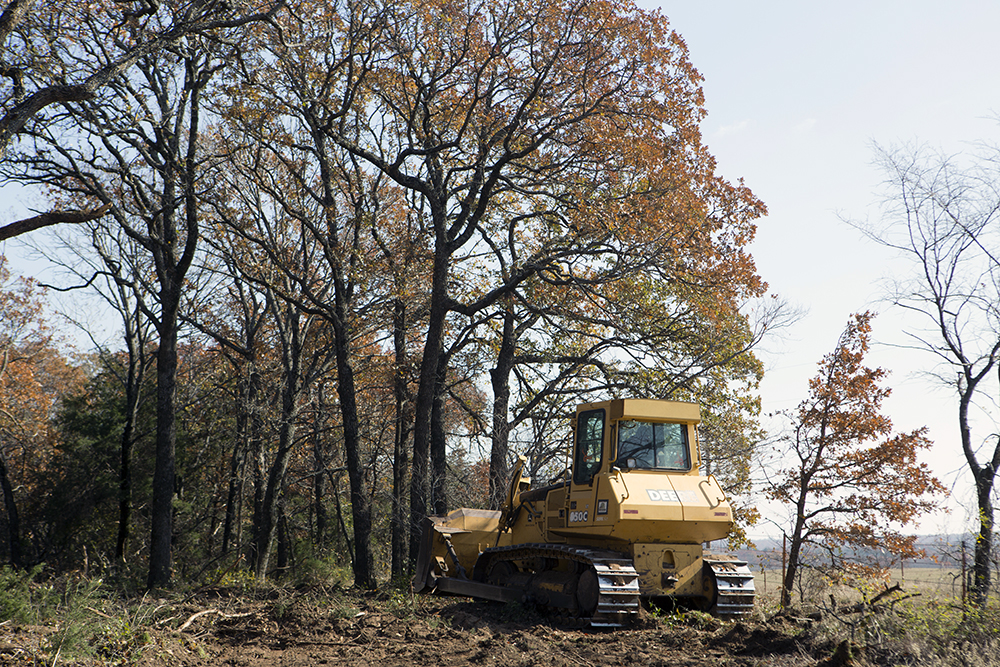
Address coarse and volatile fuels near firebreaks
One of the most common mistakes made during site preparations for prescribed fires is leaving coarse or volatile fuels close to firebreaks, also called fireguards. Coarse fuels are materials that burn for a relatively long time, such as brush piles, snags (dead standing trees), logs or stumps. Volatile fuels in the context of prescribed burning are vegetative materials containing oils, resins, waxes or terpenes that cause them to burn more intensely. They also typically throw up more embers than similar-sized nonvolatile fuels. Examples of volatile fuels include junipers (also called cedars), pines, greenbriers, blackberries and weeping lovegrass.
During a prescribed fire, a burn crew wants the fire to burn away from a firebreak relatively quickly. The crew also wants all burning materials near the firebreak to completely extinguish so they can move on to complete the burn. Coarse fuels can burn for hours or days, requiring extra labor to monitor or extinguish them when located close to firebreaks. If not monitored or extinguished, burning coarse fuels and tall volatile fuels, such as juniper trees or brier thickets, located close to firebreaks can start spot fires that can become wildfires when embers blow across a firebreak.
Part of prescribed burn preparation involves examining the perimeter of a burn unit for coarse and relatively tall volatile fuels near firebreaks and moving them either well into the burn unit or out of the burn unit. A common mistake when using a bulldozer to prepare firebreaks through wooded vegetation is leaving brush piles along firebreaks. Cleared brush should be pushed at least 50 yards into a burn unit so it can safely burn up during a prescribed fire or moved outside a burn unit.
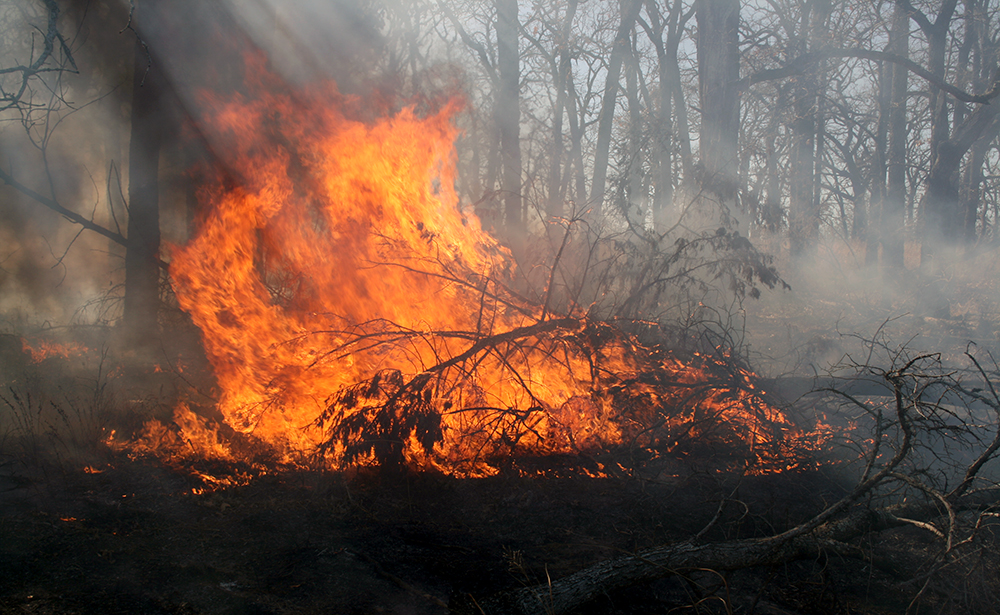
Remove piles of grass and leaves from edges of burn unit
When using a mower, rake, blower, disk or grader to prepare firebreaks, another common mistake is leaving piles of grass, leaves or mixtures of soil and vegetation along the inside edge of a burn unit. Piled or packed fine fuels, such as hay or piles of grass or leaves, cause problems similar to coarse fuels. During the preparation process, fine fuel should be moved off a firebreak and away from a burn unit or moved a considerable distance inside the burn unit away from the firebreak.
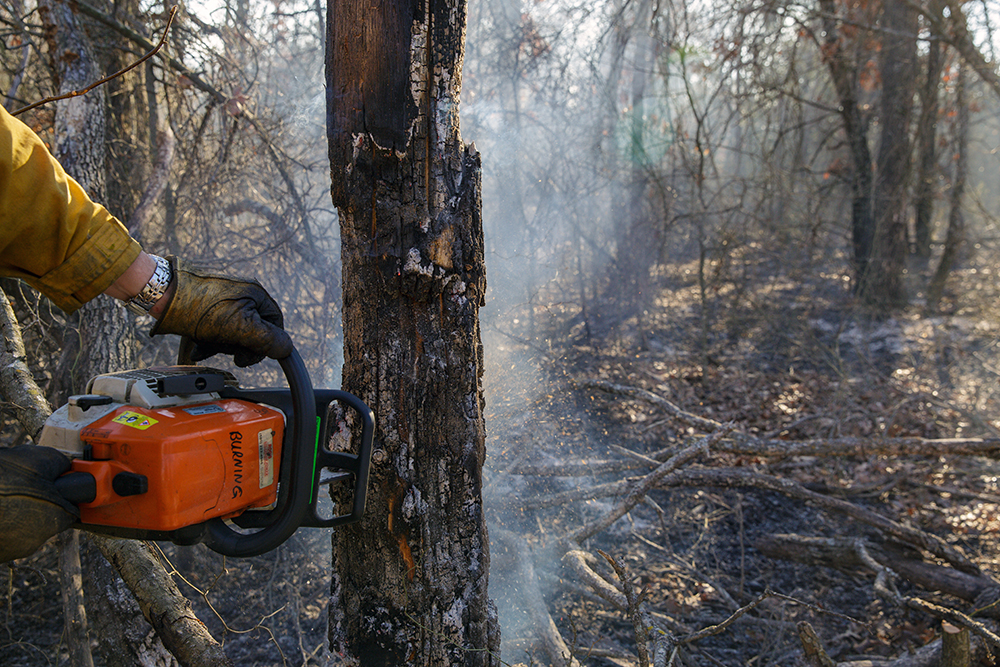
Trim or cut junipers or pines near firebreaks
Trees such as junipers or pines can be cut down and moved away from firebreaks. When planning a relatively low-intensity fire, the lower limbs and ladder fuels (e.g., greenbrier or tall grass) can be removed from the bottoms of such trees within 8 to 10 feet of the ground to prevent the fire from igniting the canopies. Most people choose to cut down eastern redcedars near firebreaks because the overabundance of this tree is a problem anyway. Greenbrier thickets near firebreaks can be cut down with a mower. The resulting brier thatch lying on the ground usually does not cause problems near firebreaks.
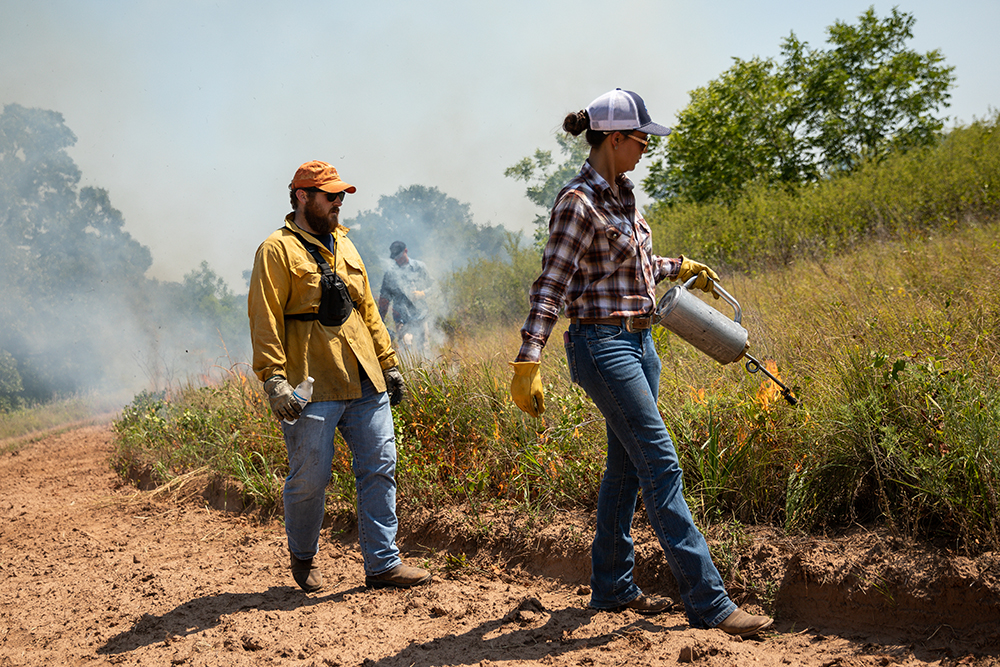
Get help when needed with prescribed burns
For help planning a prescribed burn, contact someone with extensive prescribed burning experience and training. Such individuals usually have expertise in range, wildlife or forestry, and work at places such as state prescribed burn associations (an example is the Oklahoma Prescribed Burn Association), state extension offices, state or federal forestry services, state wildlife agencies, the U.S. Fish and Wildlife Service, The Nature Conservancy, Natural Resources Conservation Service or private consulting firms.
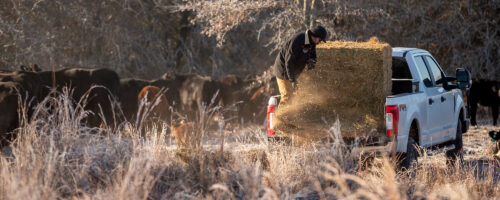
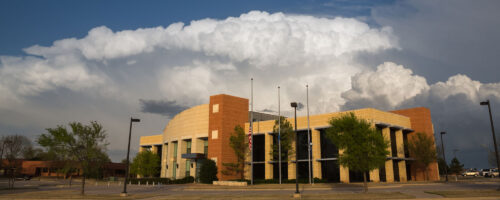
Comment
Leave a Reply
2 comment on: "Move Brush Piles, Dead Trees and Volatile Vegetation Away From Firebreaks Prior to a Prescribed Burn""

Delvin D Dupuy
December 5, 2023I own a small ranch near Bockchhito. I did a prescribed burn last spring, I intend to do anouther this spring. I have some patches of wicked wild blackberry vines, burning them does not seem to do them much harm.
What is the best method of ridding my property of these obnoxious vines. I graze a dozen cows on the place moving them from one pasture to another.
I am interested in creating habitat for white tail deer.
Thank you for your response.
Delvin D Dupuy
Mike Porter
December 8, 2023Delvin, Blackberries have volatile oils in the stems and leaves and usually burn well when there is enough fine fuel, especially grass, around them to carry fire into them. Like most Oklahoma woody plant species, blackberries resprout, so fire does not kill them–it only suppresses them. Blackberries have some food value for deer, especially the regrowth after burning. If the blackberry mottes are so large that fire does not carry through them, you can knock them down with a tractor and brush hog mower to make them more manageable with fire. If you want to selectively kill some of the mottes to encourage more forb and woody diversity in the blackberry motte locations, you can foliar spray triclopyr (e.g., Remedy, Garlon, etc.) during summer after blackberries begin to ripen fruit–this tends to be the time when they are most susceptible to the herbicide. If you use an herbicide, please read and follow the label directions.